When you’re in a riding or biking mood, parking lot signs help direct you without you even perceiving them. That’s all because of the road line marking paint on the street design. Picking the right type of paint for road design is important to guarantee it can be visualized clearly, is reliable, and lasts well in different environments. Whether you’re working on a freeway project, a park, or a walking field, knowing about the various types of traffic line paint for lines can help you achieve faster and more long-lasting results. Let’s examine different types of road paint so you can find the one that is right for you.
Different Types Of Traffic Painting Used As Traffic Marking Paint
1. Thermoplastic Road Marking Paint
If you want a durable and long-lasting line designating solution, thermoplastic paint may be the best alternative for you. Unlike regular paint, it comes as a reliable powder in harsh form and needs to be warmed to around 200°C before it can be used for the task. When it cools down, it hardens fast, forming dense, clear road line painting that can resist plenty of wear and tear. It is mostly used as thermoplastic line striping. That’s why it’s usually used as highway paint, at active intersections, and in school areas.
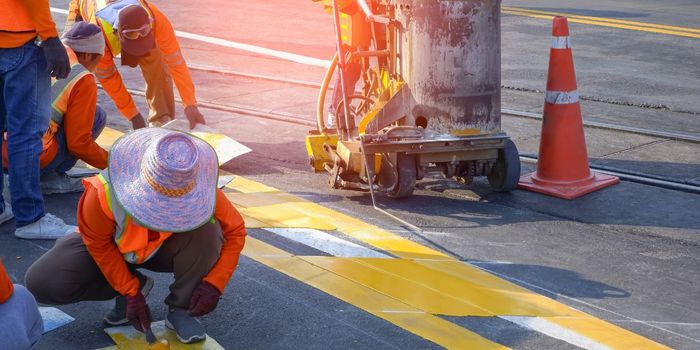
What’s It Made Of?
Thermoplastic line marking paint is made from a mix of durable materials that are tough and may be used on roads.
- Synthetic resins – for flexibility and staying together
- Glass beads – to create things brighter by reflecting light.
- Pigments – for a bright and clear banner, like shiny white, yellow, or red.
- Fillers and plasticizers – that use materials and preservatives to improve performance and endurance.
Pros:
- Long-lasting: It can remove the tiredness from the traffic outside.
- Shiny: Those puny glass objects sparkle when limousine headlights shine on them—great for darkness adventures.
- Weatherproof: Can handle rain, stays smooth, and looks good fresh.
- Quick to use: It cools and dries fast, so you won’t have to stop traffic for long.
Cons:
- Requires distinctive tools: You will need a heating scheme to melt and use it.
- Larger basic cost: It’s more expensive to use special paints than ordinary ones.
- Not excellent for cold weather: On the other hand, used right, it can break in cold places.
If your project needs road markings that are durable and brilliant—especially in busy districts or places where security is important—thermoplastic paint is a great and professional alternative. Just wait eagerly outcomes the for the thermoplastic paint price for the initial investment and the right paperwork.
2. Chlorinated Rubber Paint
What Is Chlorinated Rubber Paint? In case you’re working on street markings, or pavement marking paint in damp regions, coastal districts, or mechanical zones, utilizing chlorinated rubber paint may be a great and reliable choice. This paint adheres well to various surfaces, including old ones, and lasts a long time. It has been utilized for a long time and is known for being safe to water, oil, and light harm from a harsh environment. This makes it extraordinary for zones where standard paint wears out rapidly.
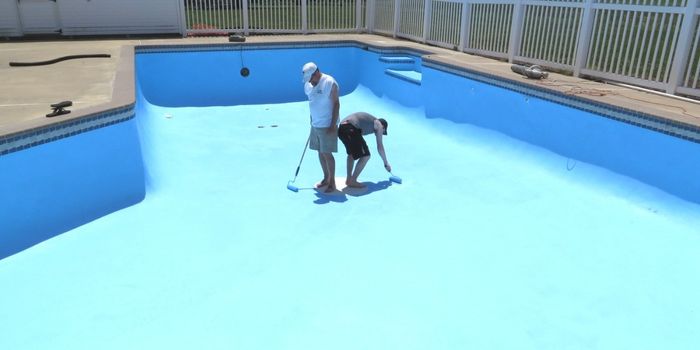
What’s It Made Of?
- Chlorinated rubber resin helps remove sticky things and makes it simple to utilize.
- Pigments and colors – for eye-catching pennants.
- Additives- to help with drying, stature, and continuance.
Pros:
- Great hold: It sticks well as line marking paint for concrete, black-top, and ancient markings.
- Waterproof: Great for damp or muggy regions.
- Manufactured battling: Uncommon materials offer assistance in avoiding spills and work well in extraordinary temperatures in harsh environments.
- Medium substance: More grounded than water-based materials, but not as solid as plastic.
Cons:
- High VOC levels: Not a great alternative for the environment due to solid fumes or exhaust.
- Solid scent: Needs great ventilation or defensive supplies while utilizing.
- Not exceptionally solid: It might wear out or break on the off chance that utilized a part over time.
So, if you need a solid paint that can stand up to water for active streets or mechanical zones, chlorinated elastic paint may be a great choice.
3. Water-Based Road Marking Paint
What Is Water-Based Acrylic Paint? In case you need a second-rate, eco-friendly, and smooth-to-use choice for line markings, water-based, non-toxic paint could be an awesome choice. You don’t require high-priced materials or forceful chemicals, just rely on it and let it dry. You’ll be able, as a rule discover acrylic line marking paint used on city boulevards, in stopping parcels, in walkable degrees, and indeed in places where walking activity like home is low.
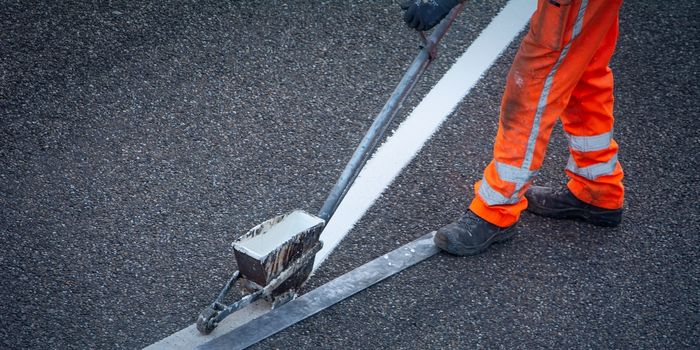
Water-based acrylic paint is made with:
- Shaded polymer coating – frame the paint, stretchy and exceptionally gummy.
- Water serves as the most strong material in the recommendation of redressing hurtful objects utilized in arms.
- Pigments and Colors offer assistance to make shining and clear pennants.
- Added additive substances offer assistance to speed up drying time and boost production. It’s a great alternative that sticks well and is simple to see within the right positions.
Pros:
- Eco-friendly: Decrease in VOCs (harmful chemical compounds), so it’s more secure for workers and the soil.
- Simple to utilize: No complicated machines required, just splash or roll it on.
- Quick drying: Particularly in warm climates, so streets remain dry quickly.
- Reasonable: Amazing for ventures that don’t require high plans.
Cons:
- Not exceptionally long-lasting: It goes quickly on active streets.
- Weather-delicate: Cold or stormy climate can make drying troublesome.
- Low life expectancy: Not extraordinary for highways or active activity zones.
At the end, if you’re authoritative and have restricted activity or require a reasonable promotional reply, water-based colored paint may be an intense and viable alternative.
4. Epoxy Road Marking Paint
On the off chance that you would like solid, long-lasting lines that can handle overwhelming activity, chemicals, and wear and tear, epoxy paint is the most excellent choice. It’s not just a paint, but it’s a two-part framework that incorporates a sticky base and a hardener. When these are mixed together, they connect and solidify into an awfully solid layer. You’ll frequently see them in official places like warehouses, businesses, airplane terminals, and active streets.
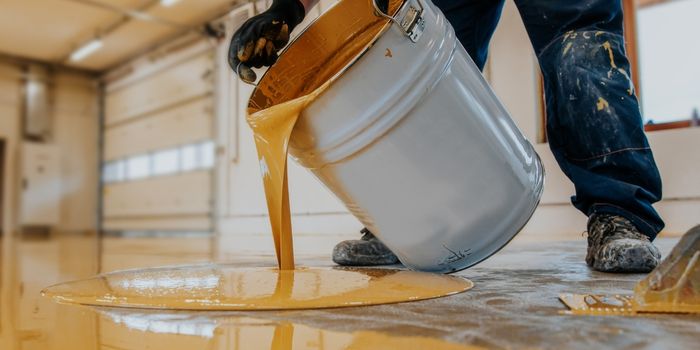
What is it made from?
Epoxy paint includes:
- Binding material could be a sticky substance that makes a solid and enduring layer. Hardener (makes a difference the paint dries) triggers the method that produces the paint solidify.
- Colors – for shining and dynamic colors.
- Added substances – for battling UV beams, moving forward stream, and controlling the surface. It dries rapidly and makes a solid, long-lasting surface that’s truly great.
Pros:
- Exceptionally tough: Incredible for high-traffic areas and lasts a long time.
- Safe to manufactured materials: Works well with oils, road salt, and cleaning items.
- Incredible staying control: Sticks well to two pieces of blacktop and solid surfaces.
- Less nourishment required: Doesn’t require visit reapplications.
Cons:
- Costs more than regular paints.
- You would like to blend the sticky substance and hardener correctly, and spend some time working on it.
- Needs a dry, clean surface: Dampness can influence how well things adhere.
- Not ordinarily reflective road paint: You’ll have to include glass beads, things for seeing at midnight.
In high-need solid markings that can stand up to extreme conditions, utilizing epoxy paint may be a keen choice.
5. Latex Paint
What Is Latex Paint? If you are managing a small or short-term road project, using latex paint could be a good idea. It’s made with water, simple to apply, and dries fast, which makes it perfect for places like parking lots, schoolyards, workplaces, or playgrounds. You don’t need special tools or toxic chemicals, which makes the job a lot easier.
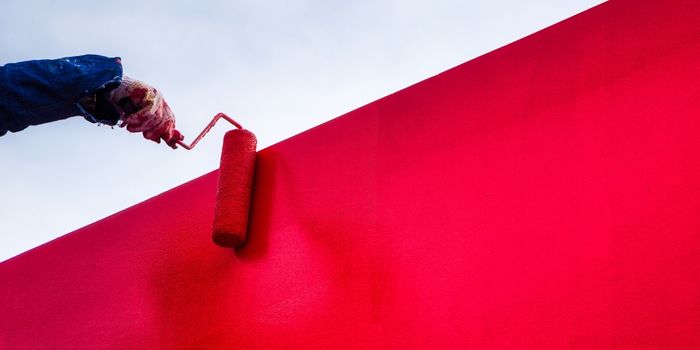
What’s It Made Of?
- Materials covered in vinyl or styrene are the outer layer that holds everything together.
- The use of water is very important for staying solvent.
- Pigments are what make paint colorful.
- Preservatives or additives help things work better, withstand tough weather, and dry quickly.
Note: Because it is water-based, keep workers close to water as it is good for their health and good for the environment.
Pros:
- Simple to apply and repair: Just add water—no harsh chemicals required.
- Fast drying: Perfect for important jobs and cutting down on waiting.
- Affordable: Someone who has the best cheap options.
- Less odor and fewer harmful chemicals: Safer for you and better for the planet.
Cons:
- Not very durable: Best for places with light use or for temporary use.
- Wears out fast: Sun, rain, and cars can make it lose its quality quickly.
- Not very tough against damage from things hitting it: Not good for highways or crowded work areas.
If you need a simple, inexpensive, and safe way to mark roads in easy-to-reach places, using latex paint is a good choice. Remember, it won’t last long, but it works fast when you need a quick fix.
Road Marking Paint by Color
Finished lines on roads aren’t just for ornament; they help keep the roads organized and reliable. Silvery or white traffic paint is cost-effective used for highway dividers, arrows, and crosswalks as road paint white helps in easy recognition. Yellow curb paint separates traffic going in opposite directions or shows no-passing zones as yellow traffic paint helps to reduce traffic accidents.
Red traffic paint areas highlight that these are hazardous, like fire lanes or restricted zones. Green traffic paint shows bike lanes and eco-friendly courses, and black traffic paint is frequently used for regular signs or to build better visibility. Either it is white road marking paint, yellow road marking paint, blue traffic paint, or handicap blue paint, selecting the right high-traffic floor paint color helps people visualize better, follow rules, and stay cautious on the road. Make sure you are utilizing the right color for each position.
Conclusion
Now that you understand the various types of lane-designating paints, like thermoplastic and water-based ones, you can choose a high-quality option for your project. Either you need quick help, enduring durability, fast-drying options, or environmental choices, there is always a paint that fits your needs. If you’re looking for a reliable partner to handle road safety equipment or barrier issues, Jackwin is your go-to choice for a trustworthy road safety products & solutions supplier.


-80x69.png)

